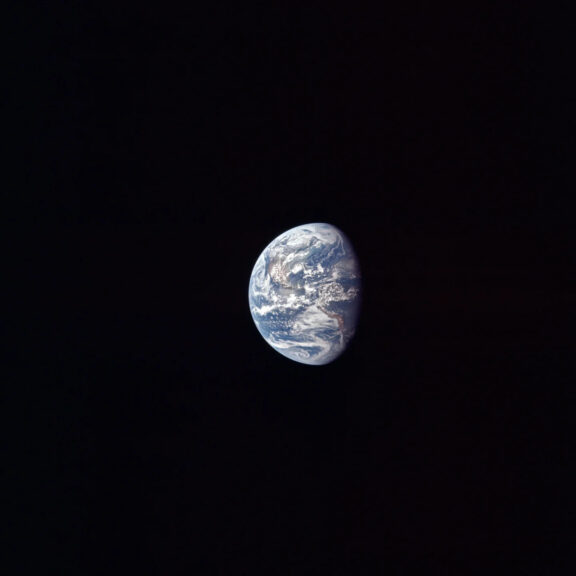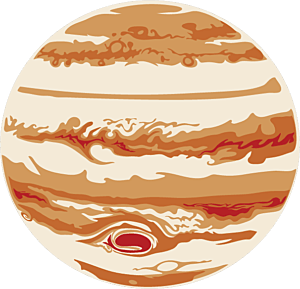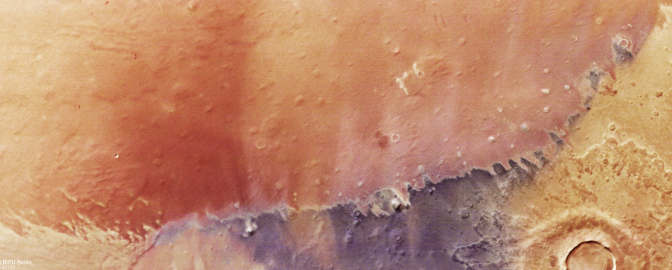The Downlink • Jun 06, 2025
A crisis we must rise to
Space Snapshot

Earth may become more cut off from the Cosmos than it has been in decades.
On May 30, 2025, the White House Office of Management and Budget announced its full budget for fiscal year 2026, including a devastating 47% cut to NASA’s science program. If enacted, this plan would cancel at least 41 space missions — including spacecraft already paid for, launched, and making discoveries. Juno would no longer explore Jupiter and its moons. The Nancy Grace Roman Space Telescope, already almost finished construction, would be terminated. The only two NASA missions to explore Venus would be scrapped. A third of NASA’s staff would be laid off. And so much more would be lost.
There is still time to save NASA science from this extinction-level event. The Planetary Society is encouraging Congress to reject the White House’s plan via a petition.
Lend your voice to this important message: That we must not let NASA’s exploration of the Cosmos be lost.
Pictured: Earth from Apollo 11. Image credit: NASA.
Fact Worth Sharing

More than 10,000 people have already signed The Planetary Society’s petition urging Congress to restore proper funding to NASA science. Signatories come from every U.S. state, the District of Columbia, and Puerto Rico, as well as 100 countries around the world.
Mission Briefings


A collision may not be our galaxy’s fate after all. New data from the Hubble and Gaia space telescopes suggest that the anticipated collision between the Milky Way and Andromeda galaxies may not be as certain as previously thought. Simulations now show a 50% chance of collision within 10 billion years, with only a 2% likelihood of a direct hit in the next 5 billion years. Pictured: A simulation of what a galaxy collision might have looked like. Image credit: International Gemini Observatory/NOIRLab/NSF/AURA.

The White House has pulled its nomination for NASA Administrator. In a surprise move, the White House announced its decision to pull the nomination of tech entrepreneur and private astronaut Jared Isaacman, who was expected to be confirmed in June as NASA Administrator. The rationale, according to a White House spokesperson, is due to a misalignment with the administration’s recently announced plans to reduce NASA’s budget.

Europa could someday become more habitable. New research from Cornell University suggests that when the Sun enters the red giant phase of its evolution in about 5-7 billion years, Jupiter's moon Europa will warm up to the point that it develops and maintains a weak water vapor atmosphere. This could potentially make it more hospitable to life as we know it.

Simulations of wide-orbit planet formation could support the Planet Nine hypothesis. Researchers from Rice University and the Planetary Science Institute recently conducted simulations that suggest that wide-orbit planets may be a natural by-product of chaotic early stages of planetary system formation. This could support the possibility that there is a ninth planet lurking in the extreme reaches of our Solar System.

China has launched the Tianwen-2 asteroid sample return mission. Tianwen-2 aims to rendezvous with the near-Earth asteroid 2016 HO3, collect samples, and return them to Earth by 2031. Although this is China’s first asteroid sample return mission, it has already successfully brought samples back from the Moon twice.
From The Planetary Society


Learn more about what the 2026 budget proposal means for exploration. This week’s Planetary Radio features a conversation with The Planetary Society’s director of government relations, Jack Kiraly, about what’s in the nearly 500-page document, what it means for the future of space science and exploration, and how anyone in the world can act to save NASA science.

Help fuel our efforts to save NASA science. The Planetary Society is dedicated to advocating for NASA’s scientific exploration of space. Our space policy and advocacy team works year-round to ensure a healthy NASA budget, and right now, this work is more important than ever. Make a contribution today to support our advocacy work, and a generous Planetary Society member will match it up to $75,000.

Watch the 2025 Humans to the Moon and Mars Summit. Sessions from the recent event are now available to watch for free on the ExploreMars YouTube channel. This includes a panel discussion about the critical role of space science in national strategy and innovation, led by The Planetary Society’s Mat Kaplan with Planetary Society board member Britney Schmidt, PhD, among the panelists.

June’s book club pick is here! “The Overview Effect” by space philosopher Frank White explores what happens when astronauts see Earth from space and why that moment changes them forever. The author will join our virtual book club meeting later this month to answer Planetary Society members’ questions and discuss the book. Not yet a member? Join today.

Join our first live, in-person book club event. Our usually all-virtual book club is taking to the stage later this month in Pasadena, CA. Join us on June 25 for a live discussion about the creation of “Mars: Photographs from the NASA Archives,” with three of the book’s authors: former NASA Chief Scientist Jim Green, JPL Emeritus Chief Engineer Rob Manning, and planetary scientist and author Emily Lakdawalla. Tickets are free. If you can’t make it in person, you can join by Zoom.
What's Up

In the pre-dawn, look for super bright Venus in the east. In the evening, very bright Jupiter is very low in the western sky, with reddish Mars above it. Later in the night, yellowish Saturn rises in the east. Find out what else to look forward to in June’s night skies.
Join now and save space missions

If you are not already a member, become one TODAY and help shape the future of space science and exploration by fueling mission-critical advocacy efforts. Our fight for space science is only possible because of the support of our members.
Will you join us and help save more missions?
Wow of the Week

This stunning photo of the Moon was captured by 19-year-old student and amateur astrophotographer Ildar Ibatullin from Kyiv, Ukraine. He captured the photo in the midst of an air raid alert, an event that has become common in Kyiv since Russia’s invasion of Ukraine. “Even as air raid sirens sounded throughout the city,” Ildar told The Planetary Society, “I was able to document the beauty above us, creating a powerful contrast between the realities of war on the ground and the unchanging celestial landscape. I believe it demonstrates how astronomy and astrophotography can provide moments of wonder and perspective even in the most challenging circumstances.” Image credit: Ildar Ibatullin.
Send us your artwork!
We love to feature space artwork in the Downlink. If you create any kind of space-related art, we invite you to send it to us by replying to any Downlink email or writing to [email protected]. Please let us know in your email if you’re a Planetary Society member!


 Explore Worlds
Explore Worlds Find Life
Find Life Defend Earth
Defend Earth

